i. movies about animals
ii. the best things i ate
iii. Corsage [new movie]
iv. Cafe sabarsky [old restaurant]
v. a consumerist recommendation
SHORT TAKES
In Bong Joon-Ho’s BARKING DOGS NEVER BITE (the PARASITE director’s first film), the poor pay for the sins of the middle class, whose only recourse is to bribe the rich for the privilege of treading water.
If you’d like affirmation of the subway’s hidden terrors, might I suggest MIMIC? Guillermo del Toro’s skin-crawling 1997 movie about genetically engineered roaches lacks his world-vision and suffers Weinstein’s oversight, but makes for solid creature feature. (You can watch the director’s provides a glint of del Toro’s vision.)
Only Noomi Rapace could make nursing an infant sheep look normal. LAMB Is a storybook fable with picturesque images, and a lackluster but appropriate ending, a cosmic joke about humankind’s comeuppance.
THE BEST THINGS I ATE
These reassuringly adorable bunnies filled with white bean and yuzu.
A meal-worthy bread basket at Nura—coriander naan and ethereal Parker house rolls laced with sage and green peppercorn—washed down with inventive drinks, like the ghee-rinsed rye with fennel and jaggery, a highly potable take on an old fashioned.
At the roving Kreung Cambodia, a shallow tamarind soup, somlar machu, with slow-cooked beef rib, morning glories, and eggplant—something for everyone. If you missed the last pop, you’re in luck: there’s another next week at Rhodora, an excellent wine bar.
CORSAGE
Marie Kreutzer, 2022
It’s not difficult to warm to Corsage; in fact I kind of loved it. Marie Kreutzer’s film is a cheekily ahistorical portrait of a celebrated figure (the only person more famous than Empress Elisabeth in Austria is is Mozart), where the compositions are exquisite; pops of lilac counter the dark mahogany and dignified bronze; and anachronistic flourishes puncture the period-fussiness—80s pop songs are disguised as chamber pieces, and bucket bags and leopard print accessorize the standard hoop skirts and petticoats.
Marie Antoinette and The Favourite are the film’s obvious cognates, but where Sofia Coppola weaponized beauty and Kirsten Dunst turned out out a cooly languid rebellion, Kreutzer’s film burns hot and seethes beneath the surface. All thanks to Vicky Krieps who anchors the film with irreverent defiance and brash nonchalance.
Like everyone else, I've been enamored of Krieps and peculiar charm since Phantom Thread. She’s a performer of calculated intelligence and patient physicality, where the smallest of gestures, like a wrinkling of the nose or raising of brows, softly erupts in rivulets of mystery. It’s Krieps and her gestural tics, arch and laconic, that unfurl the movie out of the past and into the present.
It’s almost like we’re watching a modern woman who’s time-traveled to the 19th century and started an intimate mutiny against court life, armed with little beyond her own person, body and brain, so much as it hasn’t been curtailed, or corseted, by all forces around her. The movie is swarming with the metaphors—Corsage means corset—but its revisionist finale, cementing the film’s stanchly feminist message, is thrilling satisfaction.
You can read about the film in my interview with its director Marie Kreutzer for MUBI.
The Austro-Hungarian Empire is famed for some lavish pastries that rival the French, though you wouldn't necessarily know it from watching Corsage. Unlike Marie Antoinette and her excesses, Elisabeth exercised violent restraint. In one scene her cousin, Ludwig II, King of Bavaria, sips beer for breakfast in front of an impressive array of sweets, but she sticks with coffee, both to preserve her “wasp waist” and also to sort of spite him.
According to records, the Empress’s diet consisted of milk and eggs, and meat broth and oranges, eaten separately and sliced razor thin, in the film. We can see her rejection of elaborately coursed meals as a ploy for autonomy, though one that steers her deeper into the grasp of other nefarious standards, like those concerning women’s appearances.
MOZART TORTE
You can have cake, and beer, at CAFE SABARSKY, one of the few good reasons to visit that the Upper East Side. It’s part of the Neue Galerie and doesn’t take reservations in the daylight hours, so be prepared to stand on line unless you’re a museum member or famous person, like the glowing Glenn Close I spotted one afternoon.
There are no less than ten types of cakes (available for perusal on a table along the wall), but the one you want is Mozart torte, which features layers of soft chocolate cake and nougat, shellacked in pistachio marzipan. Made with hazelnuts, Viennese nougat has neither the stale aeration of a Three Musketeers bar, nor the chewiness of Italian torrone. It’s more like velvet down, while the marzipan is appealingly clingy, lacking the grit present in drier, almond versions.
Only invented this century (unlike traditional Sacher or Linzer tortes, also on hand), this devlishly green cake is a riff on mozartkugeln, round truffle-like candies comprising the same discrete ingredients. They’re named after the composer, a Salzburg native who was supposedly big into sugary treats.
I did not fully enjoy the Sacher torte though, the stale cake was bogged down by apricot preserves, but this is probably an outlying opinion.
Over at WALLSE in the West Village, you can have the harder-to-find Salzberger nockerl served by a gloved hand. Made sans flour in their version, the mammaric soufflé, meant to resemble alpine peaks, collapses gently under the spoon. The elegant restaurant isn’t exactly cheap; the price you pay for a serene dining room presided over by a portrait of the chef (who also owns Cafe Sabarsky) painted by Julian Schnabel.
Where else to eat Austrian food:
Werkstatt: A friendly casual gastropub south of Prospect Park.
Kolomon: More of a fusion of French-Austrian cuisine, this fancy new restaurant that took over the Breslin is next on my list.
Cafe Katja: An LES standby with requisite schnitzels. The jaeger, with creamy mushrooms, is preferred.
WHAT ELSE?
I’m still puzzled as to why this non-alcoholic aperitif company started offering ghianduja, or fancy nutella, but it’s an elevated, upgrade I can get behind.
It’s made with more hazelnuts, less sugar olive oil, and I’m unsure of its shelf life (it didn’t come with an expiration and gets unappealing runny when it’s toasty inside), but at this rate I may not have to worry about that. Coat a spoonful of pistachios with the stuff and pop a square of dark chocolate, and you might have a deconstructed mozartkugeln on your hands.


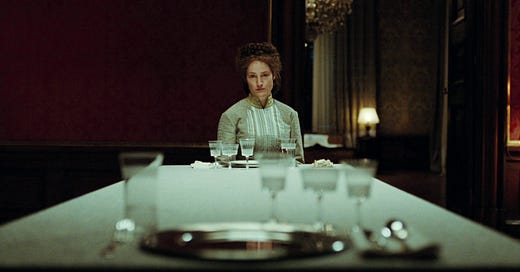





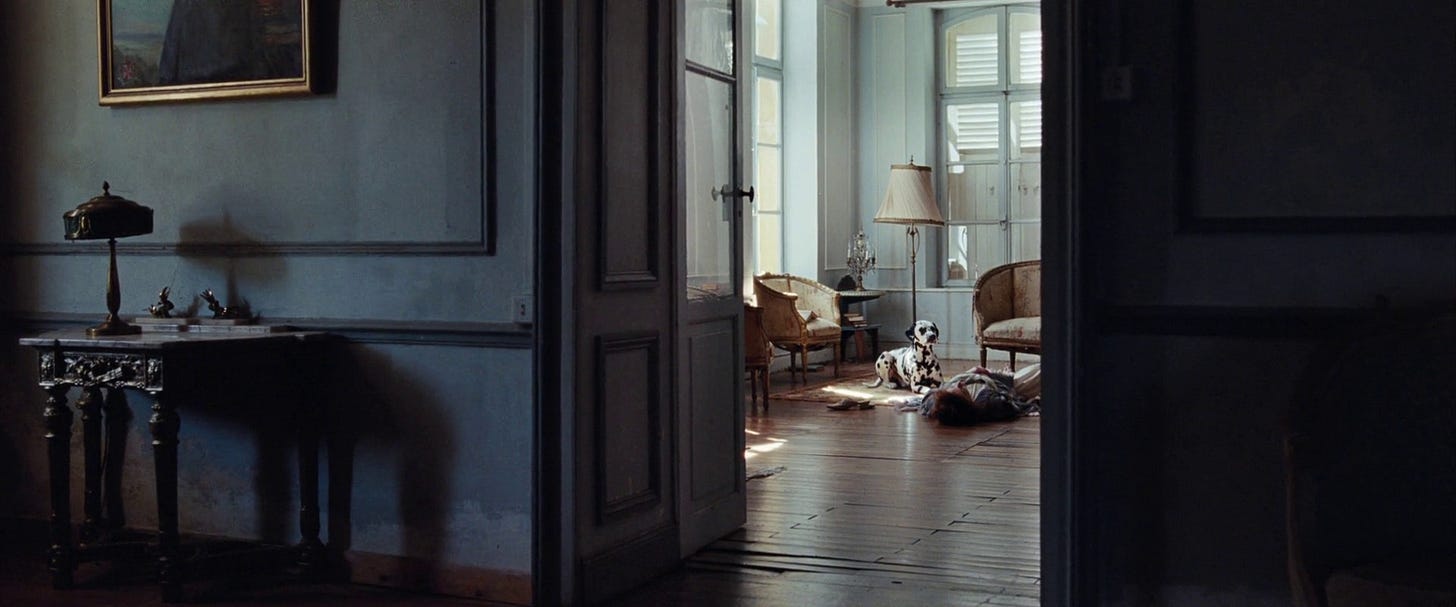
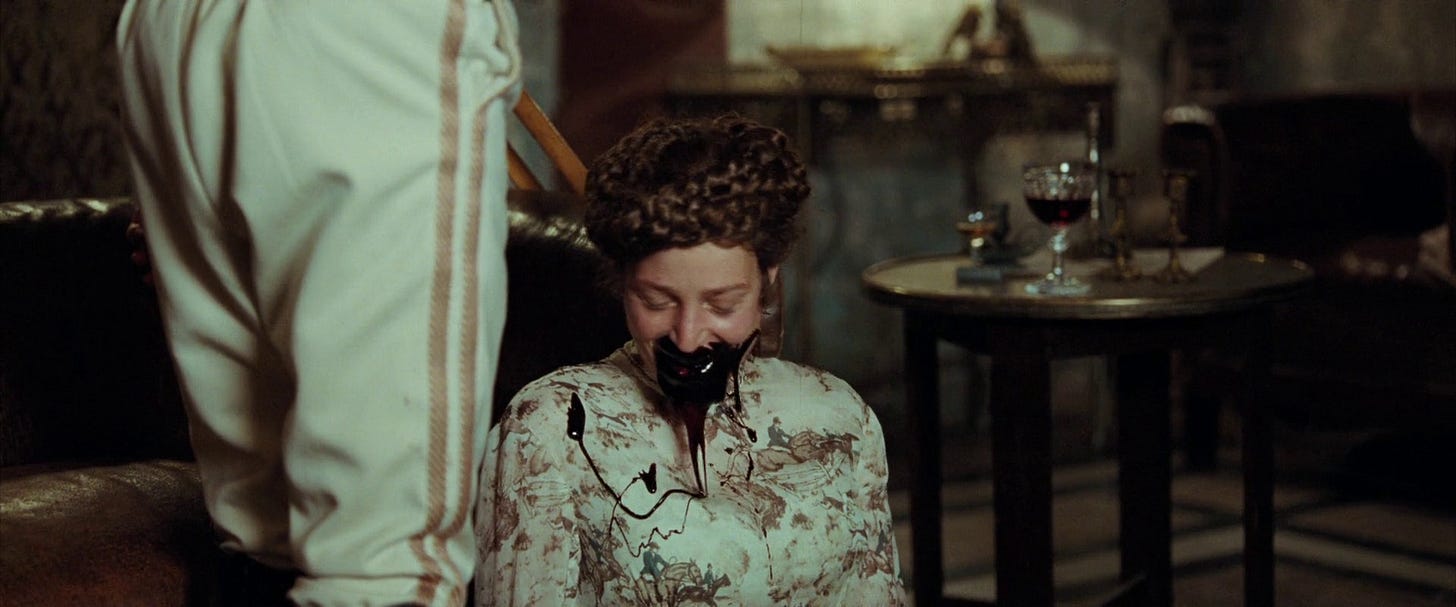
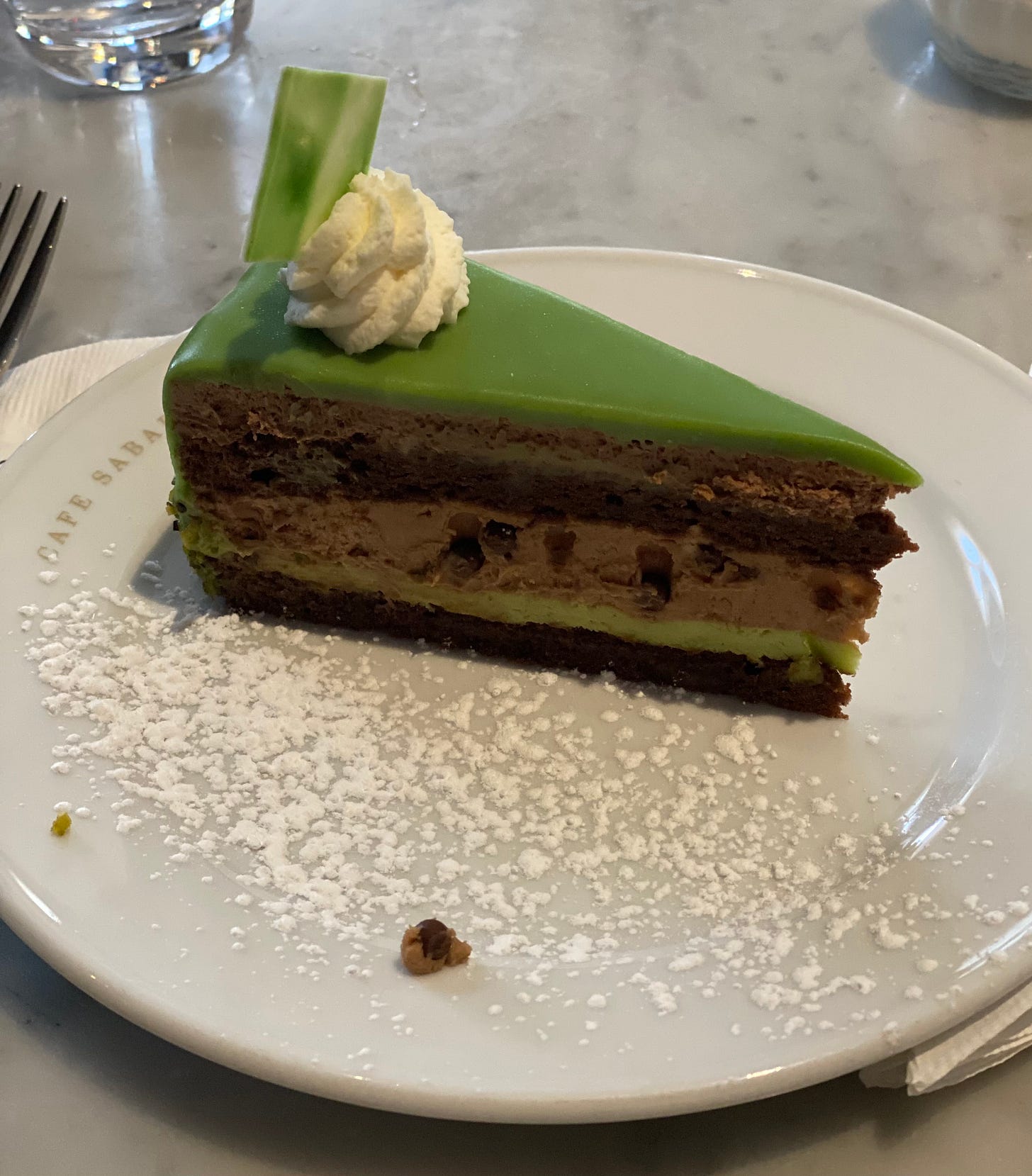
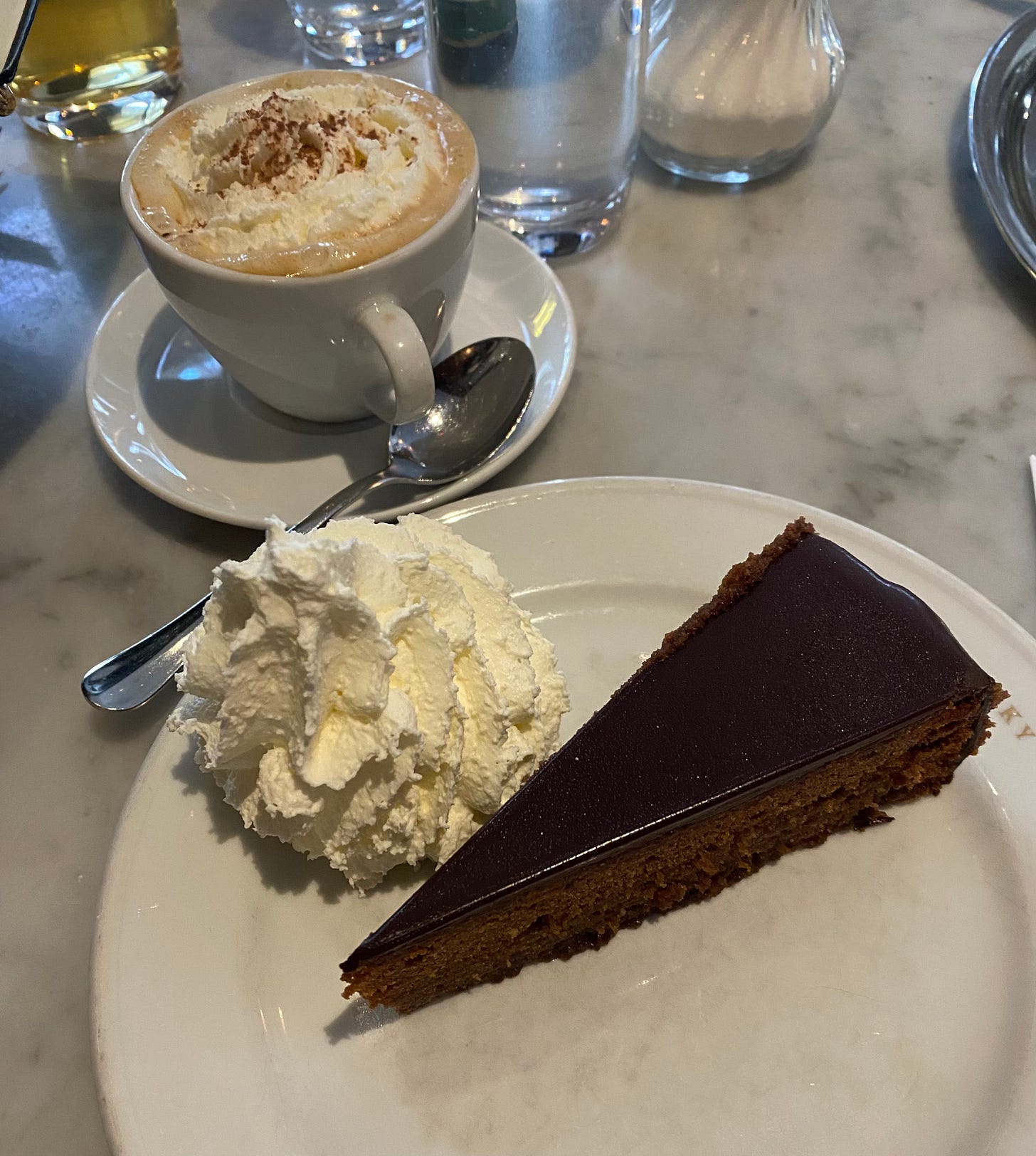
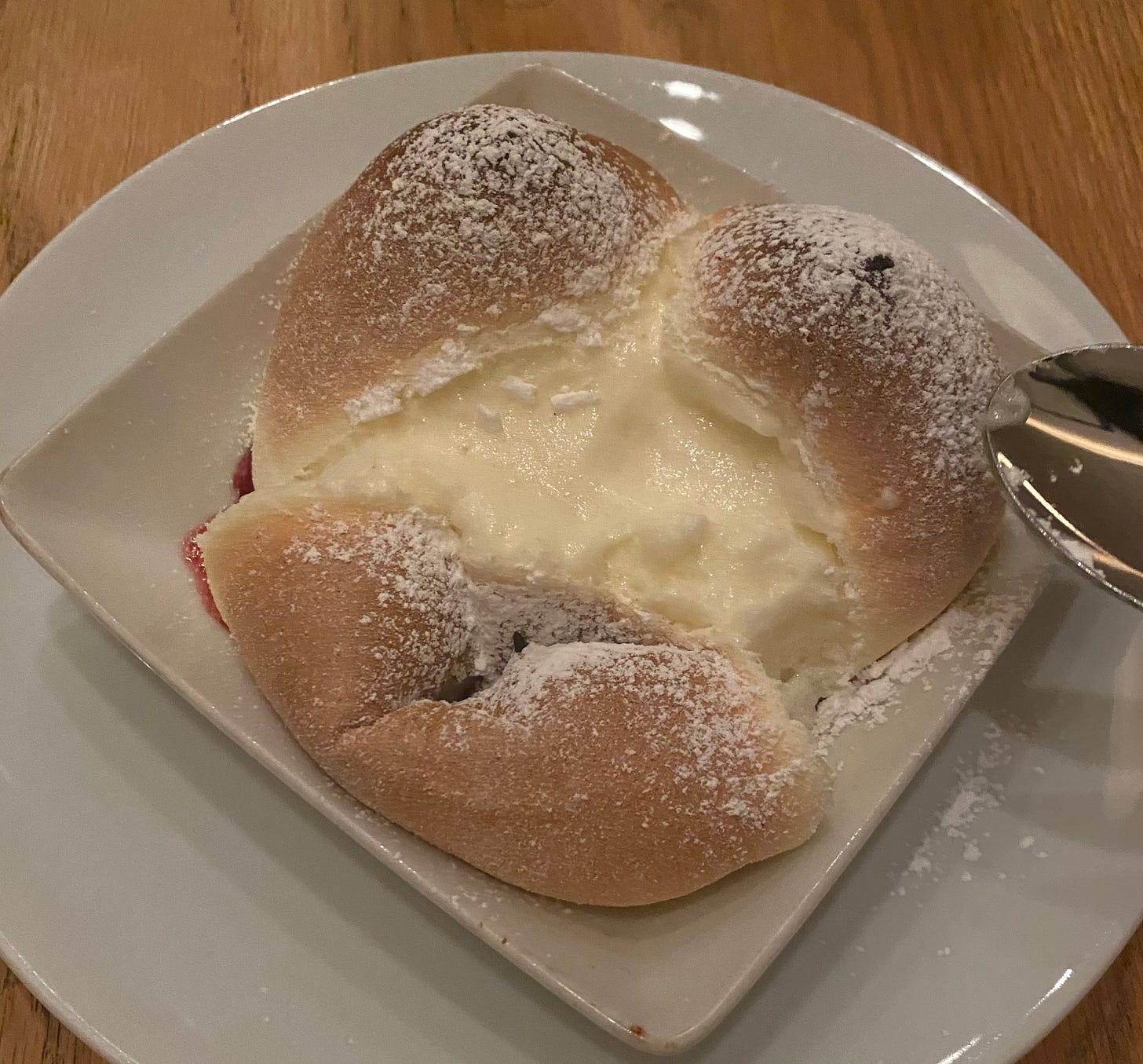
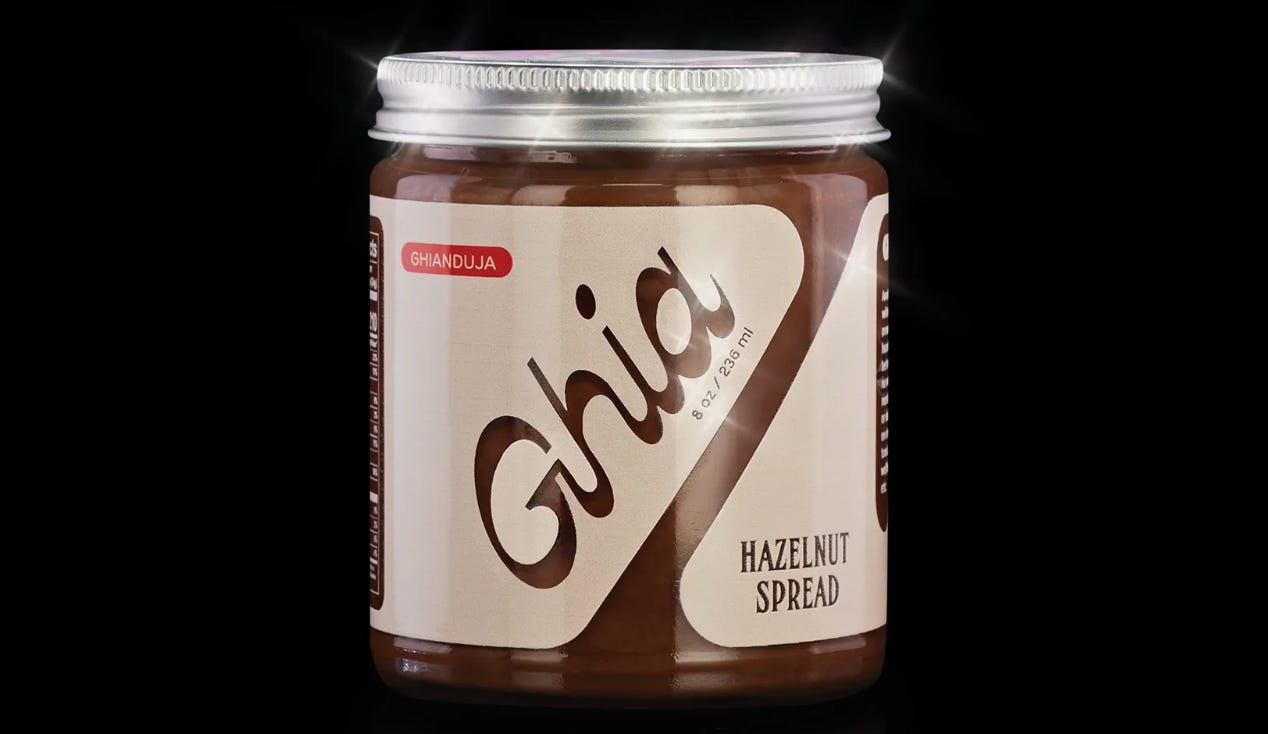
Spent my Saturday seeing corsage and then visiting the museum and cafe sabarasky, thanks to this post! I also recently read The Lonely Empress by Joan Haslip, highly recommend for more background on Sissi
wow, I loved all of this email. thank you for that